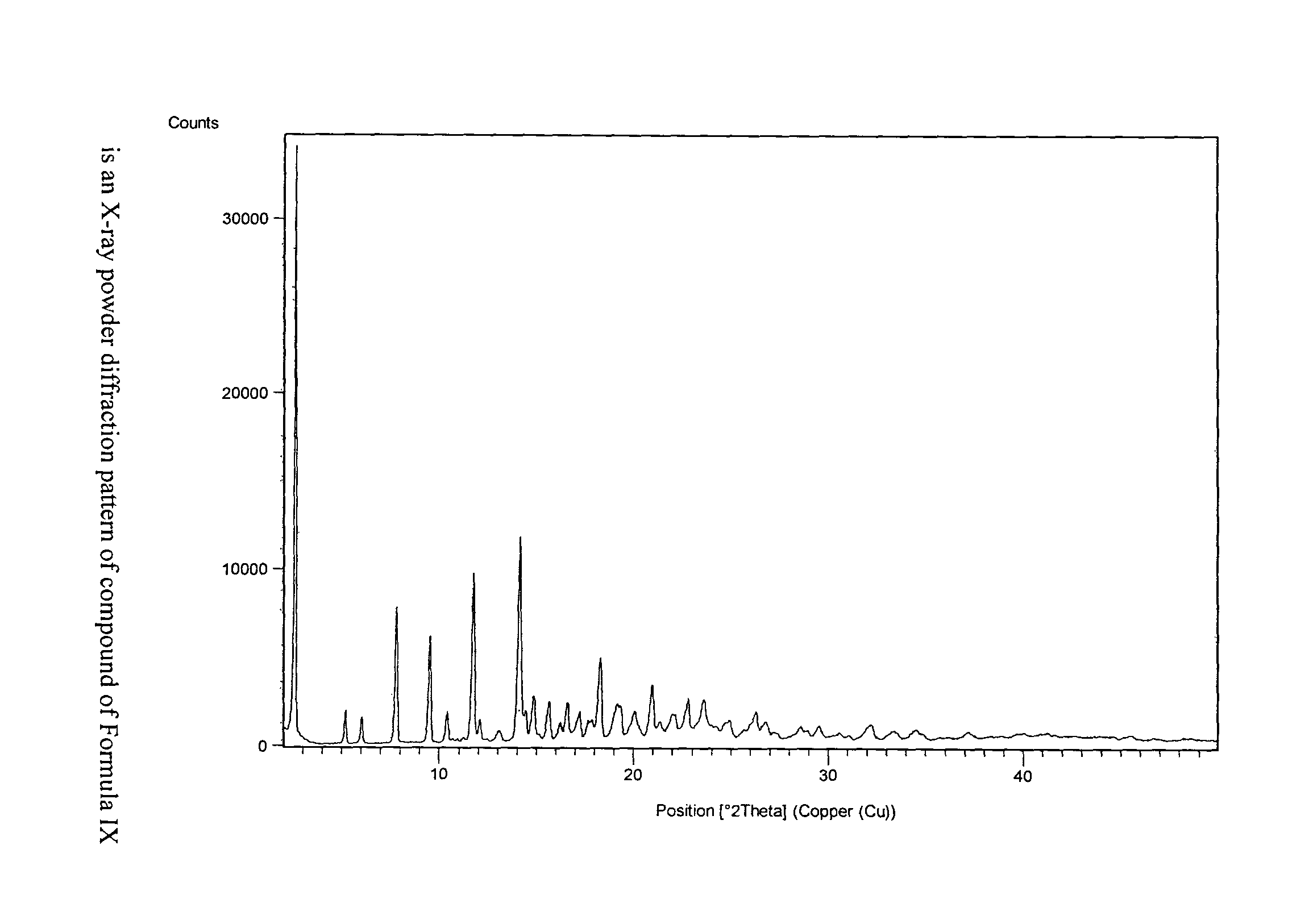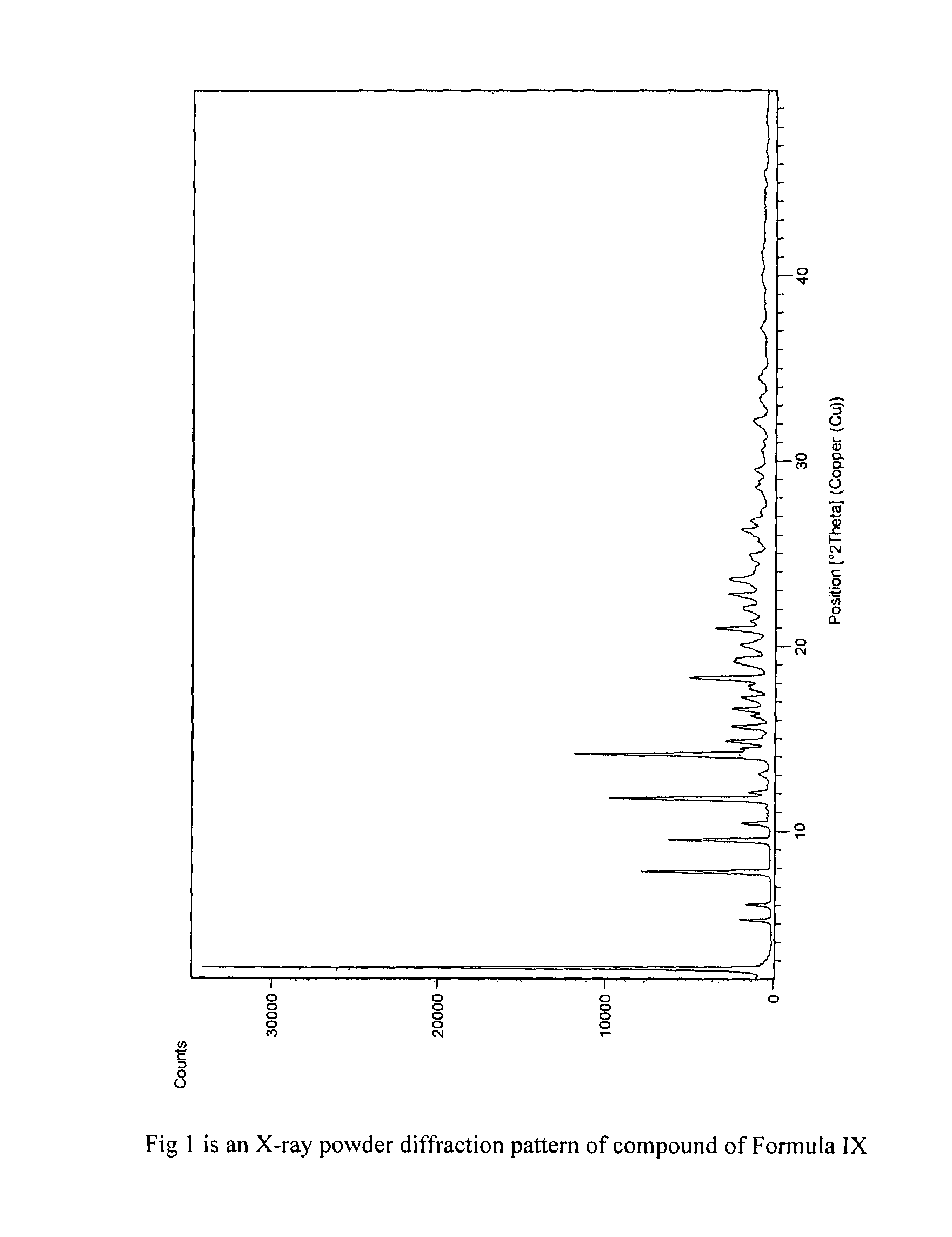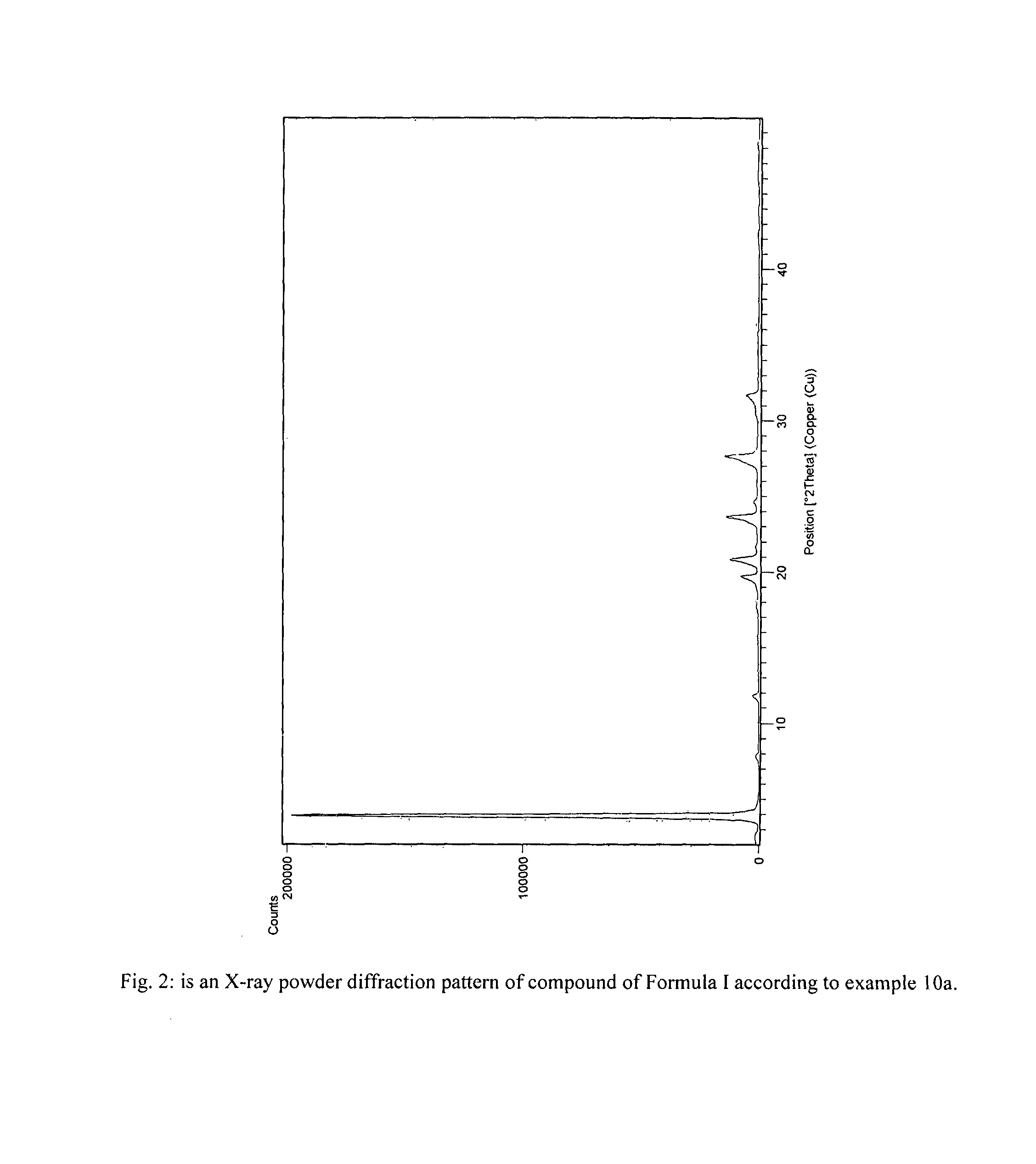Process for preparation of fingolimod
a technology of fingolimod and fingolimod, which is applied in the preparation of amino compounds, halogenated hydrocarbon preparations, and sulfonic acid esters. it can solve the problems of reducing the yield of the desired product, difficult to separate from the desired compound, and disadvantageous co-production of regioisomers
- Summary
- Abstract
- Description
- Claims
- Application Information
AI Technical Summary
Benefits of technology
Problems solved by technology
Method used
Image
Examples
example 1
Preparation of Compound of Formula III
[0215]619 gm octanoyl chloride was charged in 3.0 lit 4 necked round bottomed flask (NRBF). 507 gm of aluminum chloride was added at about 25-30° C. The reaction mass was stirred for about 60 min and cooled to about 5° C. 250 gm of 2-Phenyl ethyl acetate was added slowly by maintaining reaction temperature at about 5-15° C. The reaction mass was stirred at about 15-20° C. for about 180 minutes. The reaction mass was quenched in ice and stirred for about 30 min. Ethyl acetate was added and stirring was continued for about 10 min. The organic layer was separated. The aq. layer was charged in 5.0 lit 4 NRBF and ethyl acetate was added and stirring was continued for about 10 min. The organic layer was separated. 1500 ml DM water was added to the combined organic layers and the reaction mass was cooled to about 15° C. The pH was adjusted to about 8 to 9 with liq. ammonia solution (˜300 ml). The reaction mass was stirred for about 15 min. The organic ...
example 2
Preparation of Compound of Formula IV
[0216]In 5 Lit 4 NRBF, 410 g of the product obtained as in Example 1 was charged and 2050 ml of methanol was added. The reaction mass was stirred for about 10 min. An aqueous sodium hydroxide solution was prepared and added slowly to the reaction mass at about 20-30° C. The reaction mass was maintained at about 20-30° C. for about 180 min. The solvent was distilled out under vacuum at about 45-50° C. until a thick mass was obtained. The reaction mass was cooled and 4100 ml demineralized water was added. Methylene chloride was charged and stirred for about 10 min at about 20-30° C. The methylene chloride layer was separated and washed with water followed by washing with brine. The resultant methylene chloride layer was distilled out completely under vacuum and degassed. The reaction mass was cooled and 1000 ml hexane was charged at about 25° C. The reaction mass was stirred for about 60 min and cooled to about 0-5° C. and stirring continued for ab...
example 2a
Preparation of Compound of Formula IV
[0217]In 5 Lit 4 NRBF 410 g of compound of Formula III obtained as in Example 1 was charged and 1230 ml of methanol was added. The reaction mass was stirred for about 10 min. An aqueous sodium hydroxide solution was prepared and added slowly to the reaction mass at about 10-30° C. The reaction mass was maintained at about 20-30° C. for about 90 min. The solvent was distilled out under vacuum at about 45-50° C. until a thick mass was obtained. The reaction mass was cooled and demineralized water was charged thereafter and cooled to about 5° C. 2050 ml ethyl acetate was added at about 5-15° C. and stirred for about 10 min at about 10-20° C. The ethyl acetate layer was separated and washed with water followed by washing with brine. The resultant ethyl acetate layer was distilled out completely under vacuum and degassed. The reaction mass was cooled and hexane was charged at about 25° C. and heated to about 45-50° C. and stirred for about 30 min and ...
PUM
| Property | Measurement | Unit |
|---|---|---|
| temperature | aaaaa | aaaaa |
| pressure | aaaaa | aaaaa |
| pressure | aaaaa | aaaaa |
Abstract
Description
Claims
Application Information
 Login to View More
Login to View More - R&D
- Intellectual Property
- Life Sciences
- Materials
- Tech Scout
- Unparalleled Data Quality
- Higher Quality Content
- 60% Fewer Hallucinations
Browse by: Latest US Patents, China's latest patents, Technical Efficacy Thesaurus, Application Domain, Technology Topic, Popular Technical Reports.
© 2025 PatSnap. All rights reserved.Legal|Privacy policy|Modern Slavery Act Transparency Statement|Sitemap|About US| Contact US: help@patsnap.com



